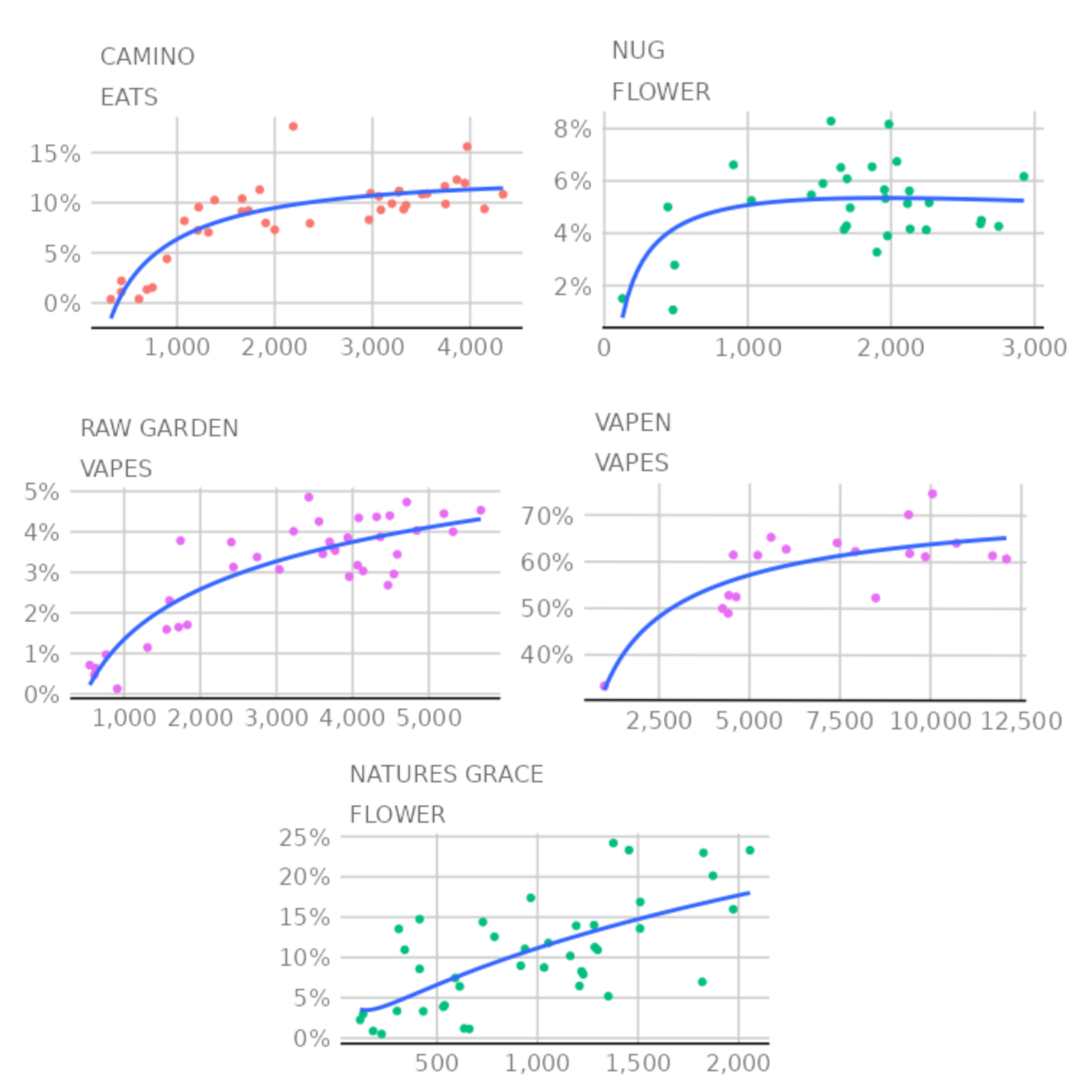Stop giving away profits for no increase in sales by fine-tuning your discounts to maximize sell-through and optimize on profit margin.
Most retailers use discounts to keep customers coming in the doors. They are perhaps the most useful tool for dispensary marketing.
But how much discounting is too much? Do you know the line where your discounts become ineffective at driving further demand and start to eat into your profit margin?
Never fear, Happy Cabbage is here to save the day. Our data scientist Bobby Fatemi decided to do a deep analysis on Discount Elasticity- that is, understanding the level at which discounts no longer increase demand.
Here are some basic facts about Discount Elasticity:
- Products can be categorized as elastic (or having ‘high elasticity’) and inelastic (or having ‘low elasticity’).
- Elastic products tend to have larger boosts in sales when discounted. Products with low profit margins need to be highly elastic in order to make up for the per unit profit loss due to the discount.
- Inelastic products tend to possess high brand value that commands a price premium. Increasing discounts for these products will more often result in loss of profit because a higher discount doesn’t increase their sales volume enough.
Many products in cannabis are elastic to a certain amount of discounting, but level off on demand at a point. That point represents the maximum level of discounting that should be offered by retailers.
This work demonstrates our ability at Happy Cabbage to determine, by Brand and Category, whether products are price elastic (more discounts drive sales) or whether discounts won’t increase sales enough to pay for the discount (discounts decrease profits without significant impact on sales).
Understanding the Relationship
Let’s dig into a specific brand and category to demonstrate this effect.
Using one of the most well-known edibles brands, a very popular product segment, we can see the following relationship between discount level and demand in a given week:

What do you see? Can you visually tell the point of discount inelasticity?
The following insights can be extracted from Camino’s discount demand model:
- Any discount above ~10% is not driving higher demand and only eating away at profits.
- On the flip side, a discount below around 6% will produce a quarter of the amount of sales volume you’ll get when discounted at 10%.
- In fact, going from 4% discount to 8% discount should double your expected sales velocity with the proper marketing
- If you already have a high discount on this product, increasing it further won’t cause the sales volume to go up proportionally- you’ll just be throwing money away.
With this, we can easily see the point where the discount ceases being as useful to retailers in driving more demand. While it may seem intuitive that offering a BOGO discount on popular edibles will make more people likely to buy them, oftentimes the increase in volume is not enough to pay for the decrease in out the door price; it’s only going to come out of your bottom line.
Expanding this Work
Below you can see the same chart, but across a sample of various brands and categories. . Each brand has it’s unique demand and discount relationship; however, all suggest that there is a maximum discount level at which demand will not continue to increase with further discounting: :

Final Takeaways:
- Flower tends to be very elastic. It will increase in demand no matter what you discount it at for most retailers, with little exception. The result is eventually flower prices going down until it equals the cost to produce it (commodity pricing). Ironically, flower brands that don’t increase in sales when you discount them are probably better for long term margins overall, because a steady set of consumers are buying them regardless of price.
- Edibles seem to taper off at the 15% mark. Discount your popular edibles brands between 8-12% for maximum impact
- Vapes lay somewhere in between the two above categories. Like flower, any discount seems to increase demand. However, unlike flower, there’s a distinct point around 10% discount that has the maximum impact on increased demand
- The more well known a brand is, the lower your discount on that brand should be. We’ve denoted the most well known brands above in green to showcase the difference.
- Lesser known brands tend to have maximum demand with higher discounts in the 30-70% range.

.svg)
.svg)



.png)
.png)
.png)